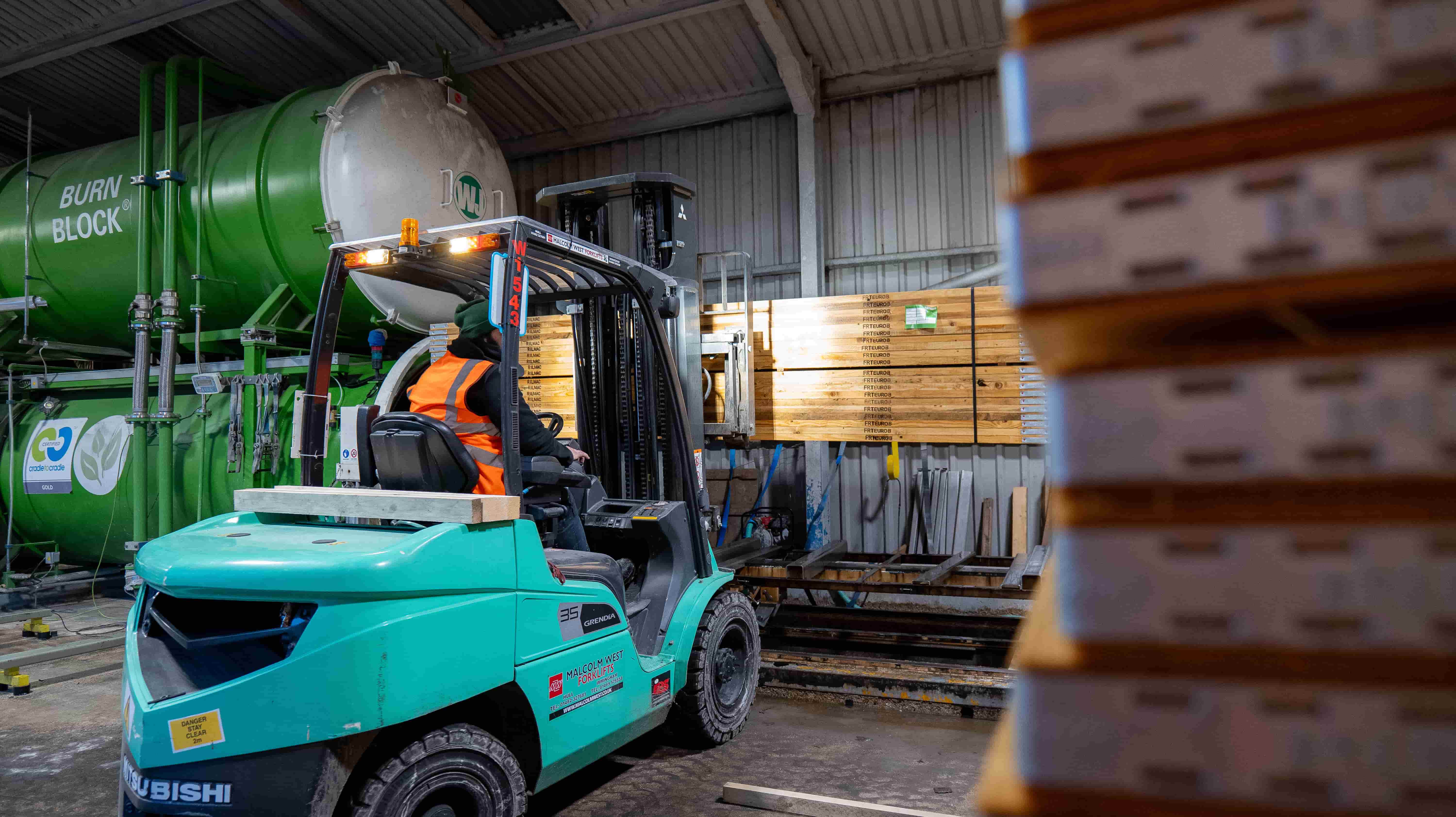Fire Retardant Timber – Getting Your Specification Right
When it comes to timber in construction, fit-for-purpose specification has never been more important. And where fire retardancy treatment is concerned, it’s never been more complex. Timber is popular as a construction material for good reason. Aesthetically appealing it’s cost-effective and flexible too. Not to mention timber’s environmental credentials from trapping carbon and reforestation. Yet, building safety depends on correct specification. Should a fire break out, it’s crucial fire-retardant timber performs as intended, protecting lives and building damage. Mark Eggleston, MD and owner of UK-based timber treatment business WJ Group, fears when it comes to fire-treated timber many specifiers remain unclear what they’re asking for. This leads to unintended (and unnecessary) risk. Mark therefore explains the main grading system, issues around documentation, and appropriate specification. With more knowledge and knowing what to ask your timber supplier, Mark says you can get specification right and ensure – should the worst happen - your timber will perform. Making sense of Euro Class categories The Euro Class system exists to grade combustible materials from A (not flammable at all) to E (combustible). As untreated timber is combustible, Euro Class grading is used to specify fire retardant timber. But what grade should you specify? Fire-treated timber typically meets Euro B or Euro C standards. Given Euro A denotes non- flammable materials (concrete, for example), I believe it would be impossible for timber to achieve an A grade. Official guidance on when to specify each grade is unclear. In the UK, Document B in the building regulations suggests specifying different grades dependent on building height (above or below 18 metres), proximity to the boundary, and building use. To me, this isn’t clear enough - there are too many discrepancies. Given Euro B is the best you can get, why wouldn’t you specify this grade anyway? Nobody wants to leave their construction open to risk, regardless of its height or end-use. My advice is to remember that B is best, where Euro Class is concerned. This treatment impregnates the timber with more chemical and provides greater protection in the event of a fire. Who’s responsible for correct fire treatment? Things get complex when unpacking documentation that accompanies fire-treated timber. Falling under The Construction Product Regulation (EU no. 305/2011), the manufacturer or company placing the product on the market must CE mark it. As we fire-treat timber using Burnblock – a Danish product - we adhere to the EU’s interpretation of the CPR – the timber treater is responsible for CE mark provision (and the subsequent traceability). The UK interprets the CPR differently. They state the company placing the treated timber for sale is responsible for CE marking and document provision. But how does a layman trading timber truly understand the specific fire-treatment process required? Fire treating timber significantly alters the performance of timber. This is manufacturing, surely? We therefore maintain the EU’s stance and provide full treatment traceability. But not all timber treaters do. Therefore, to know your timber has been effectively treated you must understand how to interpret the documents your timber supplier gives you. Unpacking the testing process Going back to the CPR, it states products in the ‘reaction to fire’ category must be CE marked (For the UK, CE marking will become UKCA in 2022). For example, to achieve CE marking for timber cladding, BS EN14915/2013 is the correct harmonised standard to meet. This states the AVCP (Assessment and Verification of Constancy of Performance) must be Class 1 for reaction to fire products. AVCP 1 requires continual auditing by a notified body. The notified body then provides a Constancy of Performance, renewed after every annual audit. Only then can your supplier issue a species-specific Declaration of Performance. At WJ Group, we provide a species-specific Declaration of Performance for every fire-treated product. We don’t have to do this, but we think it’s right. The process is complex. And that’s why it’s vital to ask your fire-treated timber supplier the right questions. Species-specific treatment The type of timber you specify determines the type of fire retardancy treatment necessary. This is determined by the chemical supplier in their fire classification report. Each report has been tested to EN 13501 and given a classification that confirms the process achieves Euro B or Euro C standard. Smoke level is then classified as s1 or s2 (s1 is best – the least smoke) and burning droplets by a d measure (d0 confirms very few burning droplets). This results in a species-specific classification like this: B-s1-d0 Does your design risk fire retardancy performance? Many specifiers remain unaware that a building’s design can affect the performance of timber, should the building suffer a fire. As we use Burnblock treatment, fire classification reports exist for many thicknesses and species of timber. Each must pass single burning item (SBI) tests to confirm performance under BS EN 13501-1:2018, with sampling carried out by a notified body. This is summarised in our constancy of performance certificate, issued with every treatment. These reports are for closed jointed systems. Fire-treated cladding, for example, would be placed board against board, testing with air gaps back and front (to consider the risk of a chimney effect). Should your building design dictate an open jointed system or a ribbon effect, that could be considered a different product. You cannot be sure how the different configuration will perform in a fire. For example, you might have increased the risk of a chimney effect. You should therefore test your new ‘product’ in its exact configuration. Only then can you be confident of the expected performance. Many independent fire testers exist to help assess situations like this. My concern is it’s left to organisations in the building industry to engage them. How to get this right By asking your timber supplier the right questions, you’ll understand the evidence behind the documents they provide. Most importantly, you’ll know your timber has been fire-treated correctly and will perform as intended should a fire break out. I recommend you ask these three key questions: Question 1: Does your treater issue the CE mark and Declaration of Performance? This is rarely the case (aside from WJ). So, how can your provider sufficiently understand the testing and third-party auditing required to create these documents? Ask them to explain this. Question 2: Is the Declaration of Performance specific to the timber species? Reputable treaters have a Constancy of Performance that summaries the fire classification report for each species. Robust auditing will be in place by the notified body that issued the fire classification report on behalf of the fire-retardant chemical supplier. A generic Declaration of Performance is, quite frankly, dangerous. Question 3: If you’re supplied with a Factory Production Control document, was it audited against the correct harmonised standard? For example, that would be EN14915/2013 for cladding. As the CPR doesn’t make this clear it’s easy to have a disconnect between an irrelevant standard and the control document. Another risky situation. Where to seek further advice Fire retardant timber is a complex topic. And yet, so crucial to specify correctly. For that reason, I want to help. As a specialist timber treatment provider, you’re welcome to contact me directly with your queries. I’m keen to support the supply chain deliver fire-treated timber you can be 100% confident in.

